5 Reasons to Plant a Red Yucca
The Red Yucca plant (Hesperaloe parviflora) is a striking addition to Texas landscapes. Also known as Coral Yucca and Hummingbird Yucca, it looks especially great in rock gardens and other xeriscapes.
This evergreen, sun loving plant has coral red flower spikes that hummingbirds love!
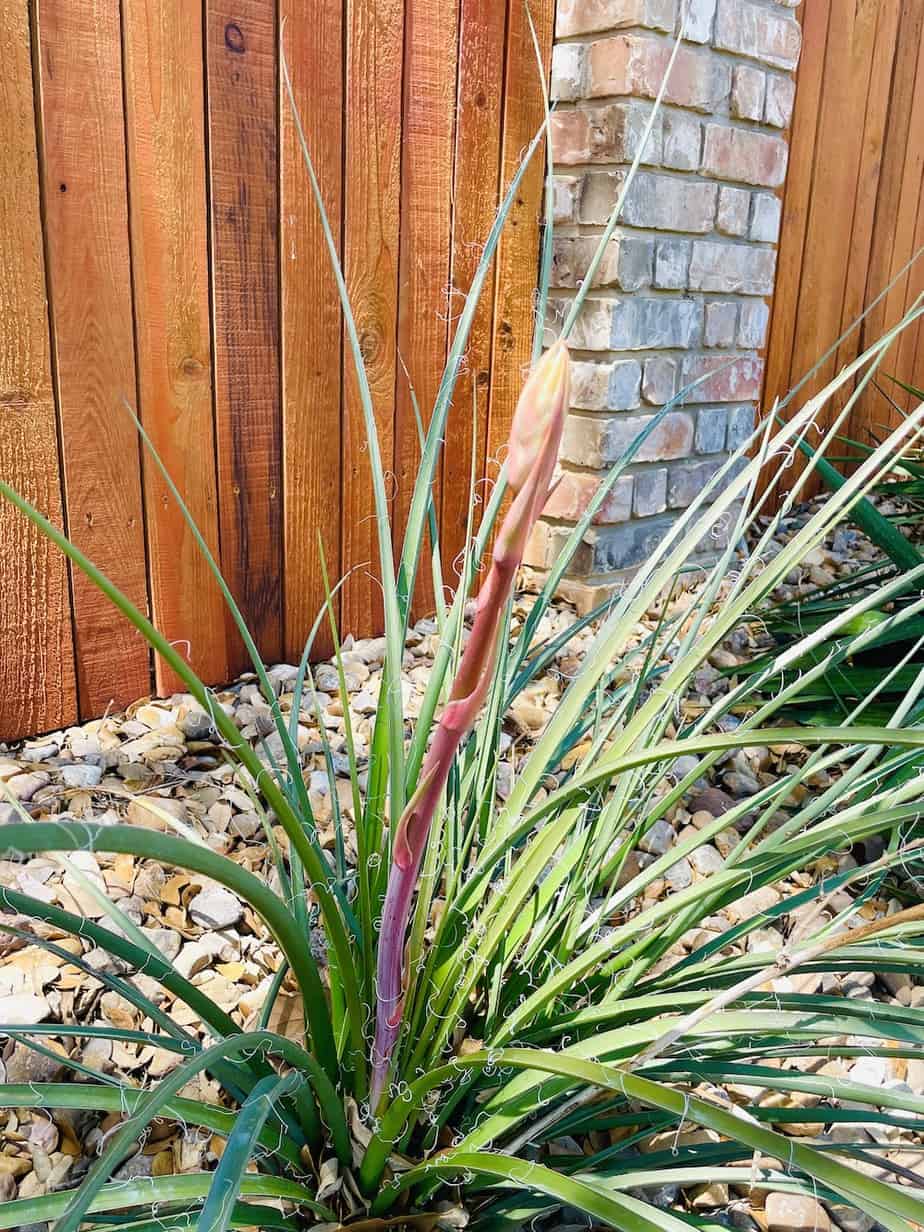
Red Yucca Flowers
Beginning in early spring (March or April), tall flower spikes will emerge from the base of the plant.
These spikes can grow several feet tall. The Red Yucca flower color is actually more coral or pink than red.
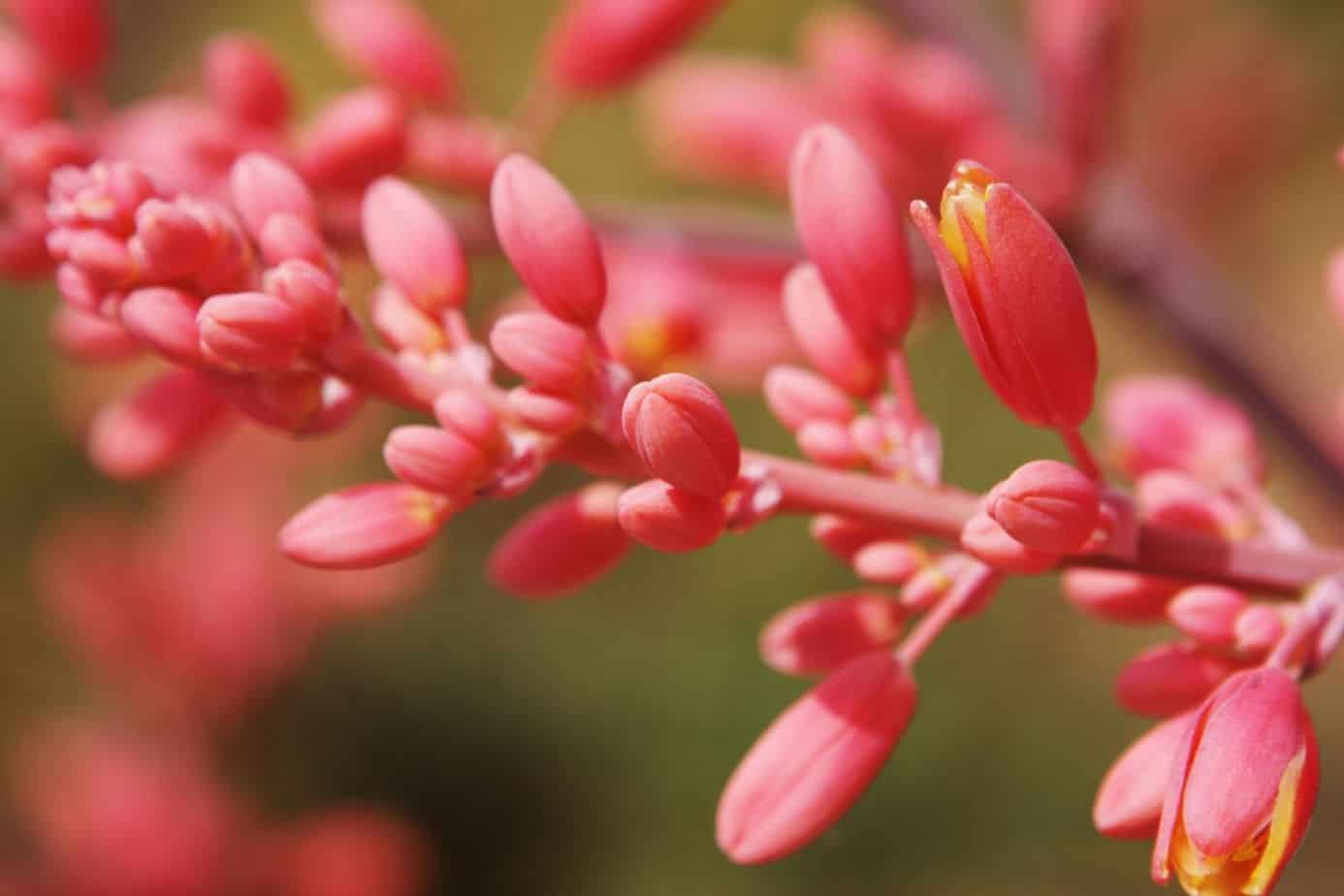
Hummingbirds enjoy the flowers, but do do deer! This plant may not be the best choice for an area that is accessible by deer.
5 Reasons to Grow Red Yucca Plant
1. Easy to grow with little maintenance
This is about as easy going of a plant as it gets! It can handle dry soil and poor soil as long as it is well drained. It needs almost no maintenance or pruning and little supplemental water once established.
2. Great for xeriscapes and even a large pot
Used commonly in southwestern landscapes, this Chihuahuan desert native looks great in xeriscapes. I saw a ton of Coral Yucca in Scottsdale, Arizona when I was there visiting last spring.
Coral Yucca looks right at home in a rock garden setting with other cacti and succulents. It can handle the extreme heat of summer and full sun.
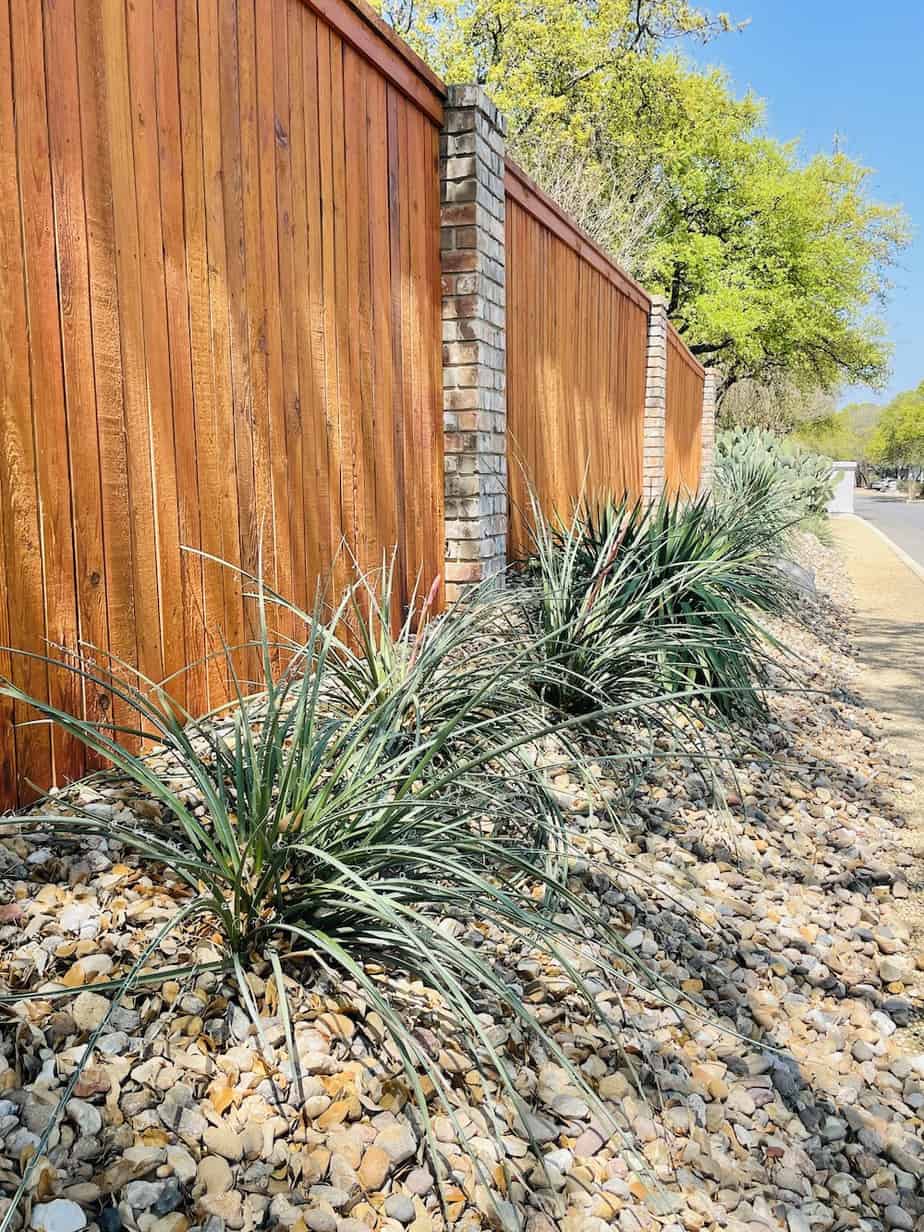
You can even grow it in large containers if you have a patio! Just make sure the pots have great drainage. No need for fancy potting soil.
3. Pairs well with other Texas natives
I love the sense of place this plant provides. If you live in central or south Texas, this plant should be in your yard!
It looks especially great when paired with other Texas native plants. Here are a few of my favorite to pair it with:
- Prickly Pear Cactus – another evergreen desert plant to provide year round texture to your garden.
- Autumn Sage – this shorter shrub looks great interspersed with Hesperaloe parviflora. Its pink, red, or white blooms pair great with the coral yucca blooms.
- Purple Skullcap – this low growing shrub with purple blooms looks pretty when placed in front of the Hesperaloe parviflora.
- Blackfoot Daisy – plant this sun loving perennial at the base of Hesperaloe parviflora. Both are heat loving plants that like dry soil.
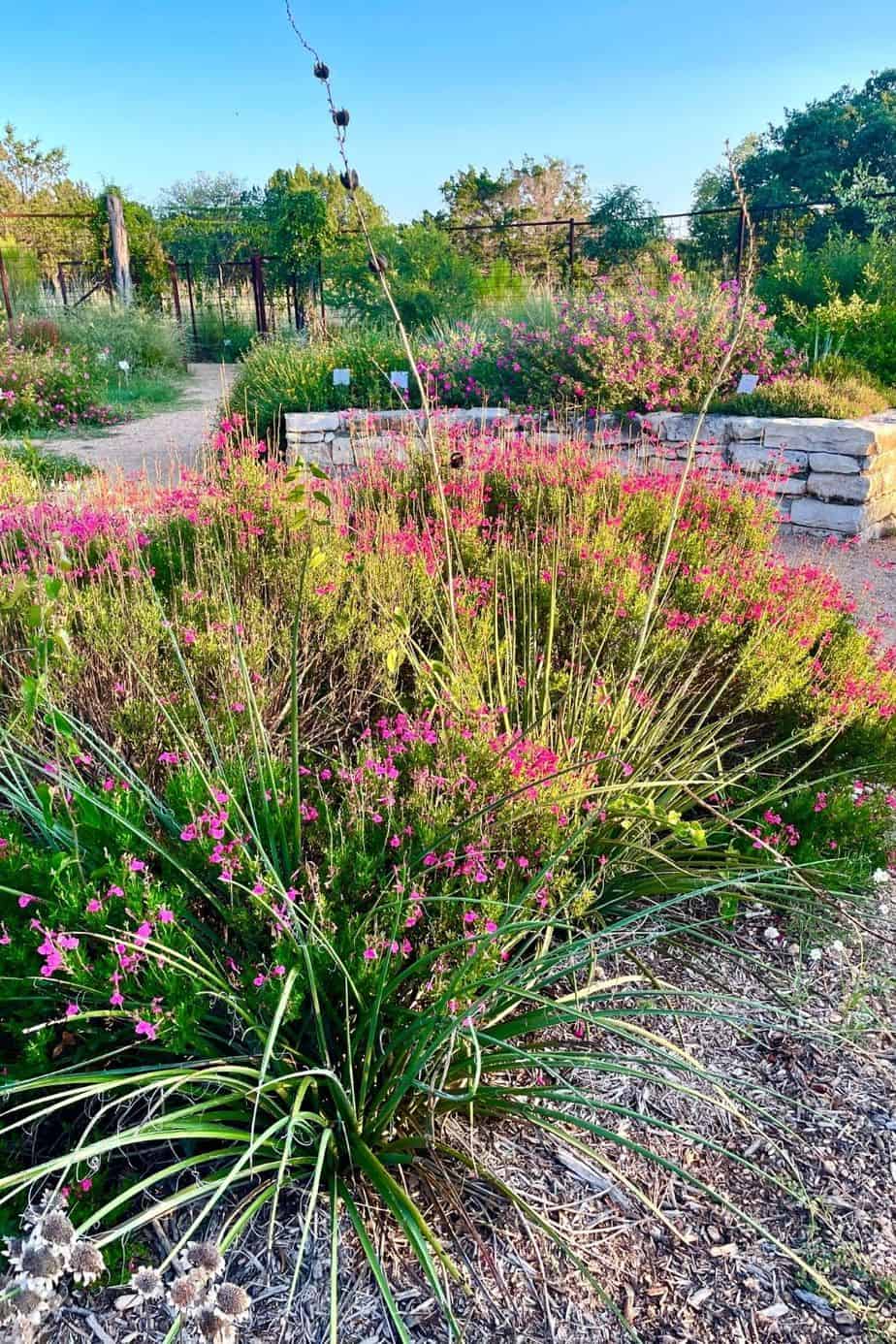
4. Attracts hummingbirds
The Red Yucca plant has showy blooms on tall spikes that attract hummingbirds. It starts blooming in March or April, just as hummingbirds are migrating through Texas in spring.
The hummingbirds are drawn to the bright red flowers. If you want to attract even more hummers, plant Turk’s Cap, Flame Acanthus and Autumn Sage along with Hesperaloe parviflora.
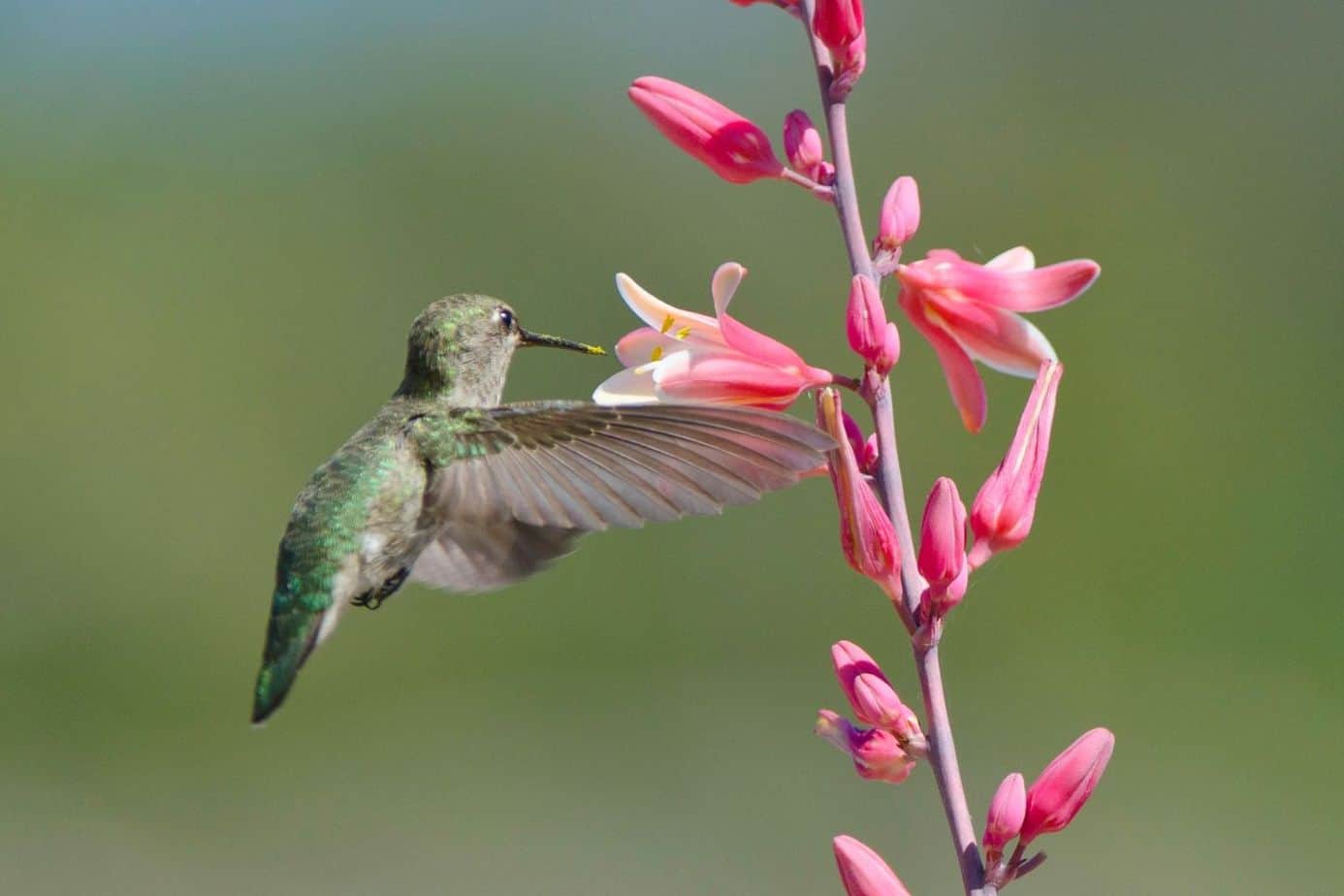
5. Evergreen addition to your garden
Even when the red flowers are done blooming in late summer, the evergreen leaves will look great in the garden and add textural interest all year round. The brown seed pods are cool too!
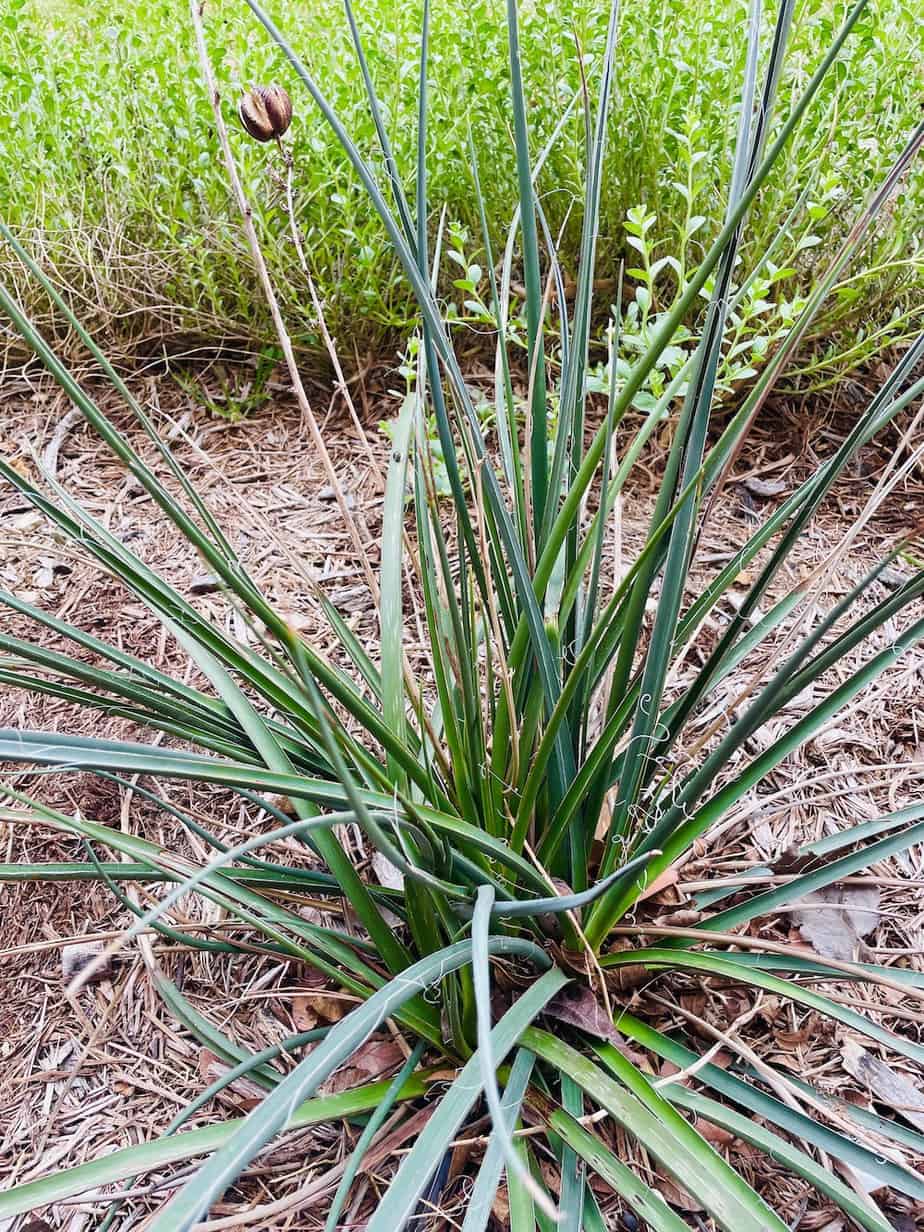
Red Yucca Scientific Name and Common Names
Before heading to the nursery, be sure to write down Red Yucca’s scientific name which is Hesperaloe parviflora. This will ensure you are getting the right plant. A plant can have many common names but only one scientific (Latin) name.
From its scientific name, you learn that Red Yucca is not a true yucca! It is not part of the Genus “Yucca”, but rather the Genus “Hesperaloe” which means “false yucca.”
Red Yucca is the common name most frequently used but this plant also goes by other common names such as Coral Yucca and Hummingbird Yucca.
Red Yucca Native Range
The native habitat of Red Yucca runs from Central Texas down to southern Texas and into northeastern Mexico. In the wild it can be found on rocky slopes.
It is now frequently grown in landscapes throughout the United States. This tough plant can handle cold winters and is hardy to USDA Zone 5.
Garden Design Tips for Red Yucca
1. Plant en masse
Yucca plants look particularly striking when planted in a group of three or more. It is an excellent accent plant perfect for xeriscape gardeners.
2. Pair with other Texas native plants
I love the look of Red Yucca paired with a variety of Salvia greggi in pink, red and white. It also looks beautiful paired with other types of succulents and cacti.
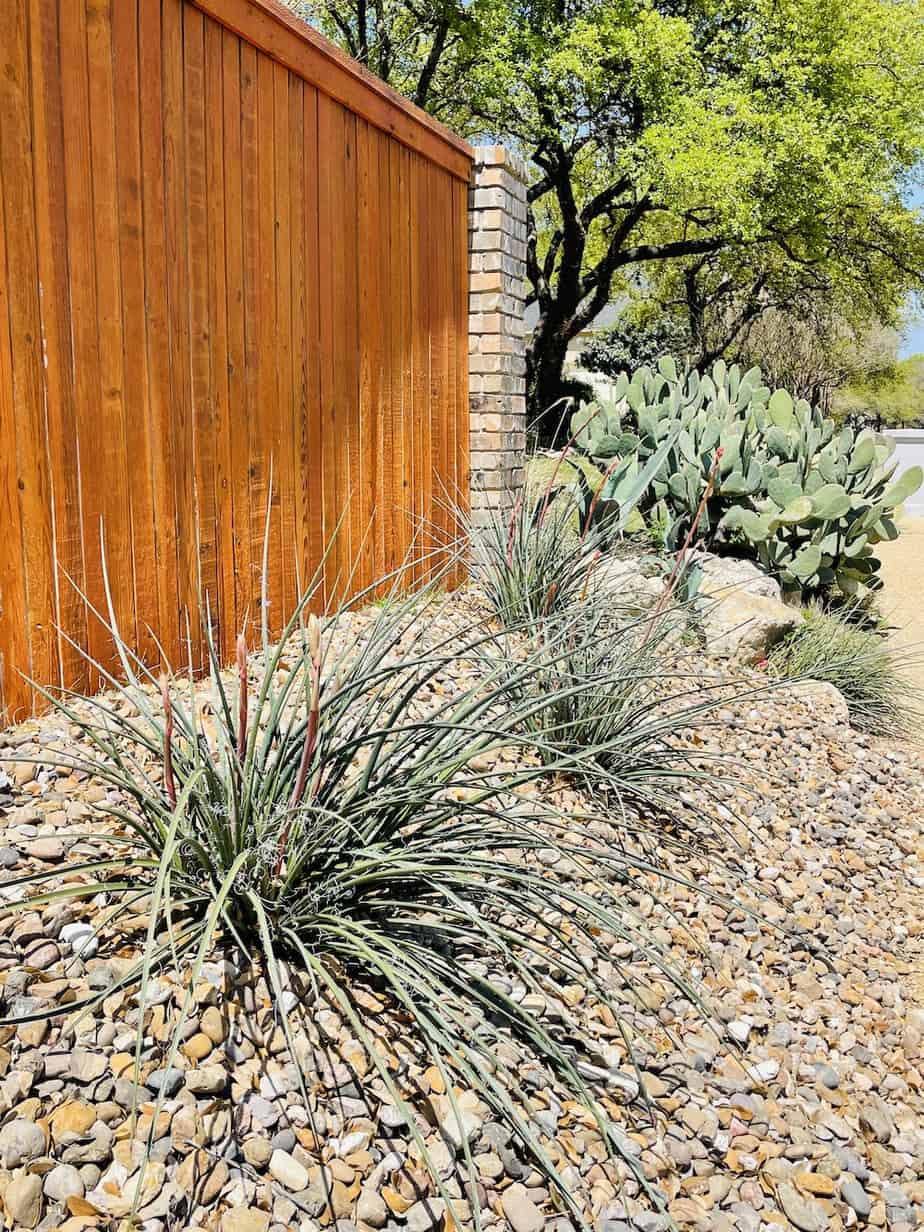
How to Grow Red Yucca
This low maintenance plant is adaptable to different soil types and requires little water once established. In fact it prefers dry soil! It does need full sun to thrive, so plant it in a sunny location.
The only maintenance required for Red Yucca is to cut back dead flower stalks once they are done for the season. It is a hardy plant that can handle cold temperatures over the winter.
Make sure to give it ample space in your garden. While young plants from the nursery may be small, a mature plant can grow to be up to five feet wide!

Welcome to Native Backyards! I’m Haeley from San Antonio, Texas, and I want to help you grow more native plants.
I have seen firsthand how the right plants can bring your yard to life with butterflies, bees, and birds. I’ve transformed my yard with Texas natives and I’m excited to share what I’ve learned with you.
Join my newsletter here! – each week I’ll send you helpful tips to make your native plant garden a reality!
Want to learn more about me and my garden? Check out my About page!
